Cabinet Committees, sub-Committees and taskforces
We take a look at the new committees.
Cabinet Committees are a window into the power structure and priorities of government. In this Parliament, David Cameron has also created new implementation taskforces to monitor and deliver the Government’s cross-cutting priorities. Dan Devine and Jill Rutter take a look at the new committees and what they tell us about the personalities and priorities of the new government.
The change from coalition to majority government has shifted the priorities of the governments and those who chair the Cabinet Committees. Cabinet itself – now with 30 attendees - long ago ceased to be the place where the real business of government is done. Much of that migrated to Cabinet Committees, but as our report Centre Forward has made clear, they can be efficient or dignified parts of the British constitution depending on prime ministerial taste. Tony Blair created large numbers of them, but routinely by-passed them by preferring more informal ad hoc meetings in Number 10. Gordon Brown reinvented the Cabinet Committee with his National Economic Council, which was used to steer the response to the economic crisis. David Cameron signalled his intent on national security by setting up a National Security Council which he chaired, with his most senior ministers represented and which he planned would meet weekly. So the new set of Cabinet Committees, just announced, offers potential clues to changing priorities, to where power lies and how the Prime Minister plans to go about governing, with lessons learned from his first term and freed from the constraints of coalition. Changing times call for changing committees – David Cameron has created 14 new ones, and abolished five old ones. 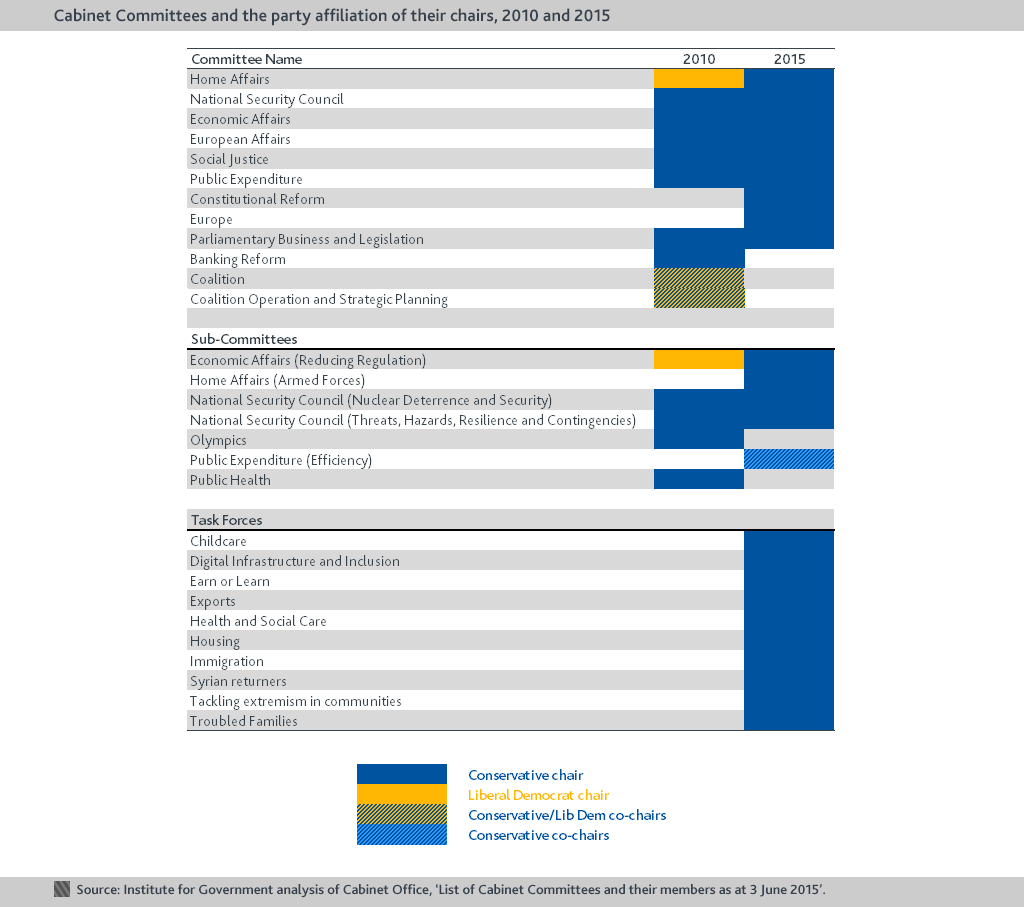
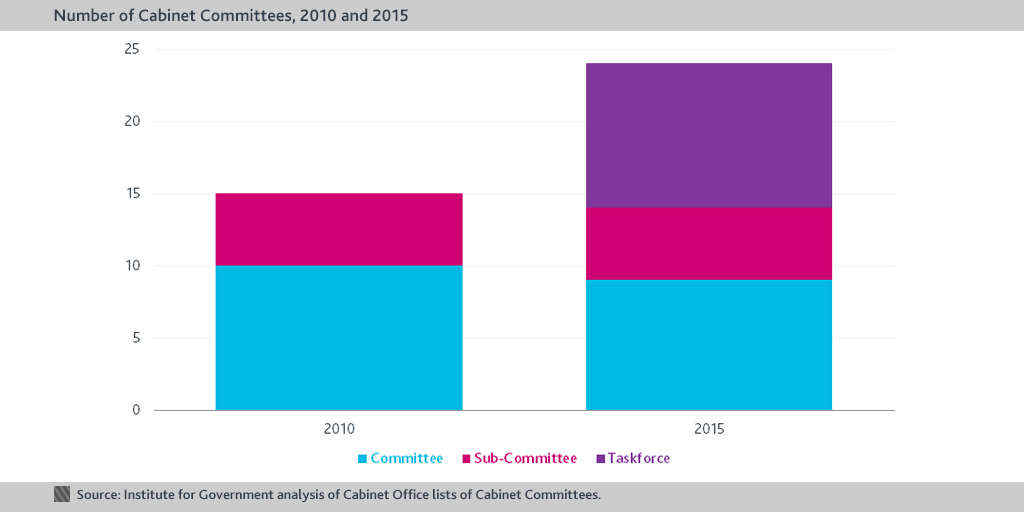
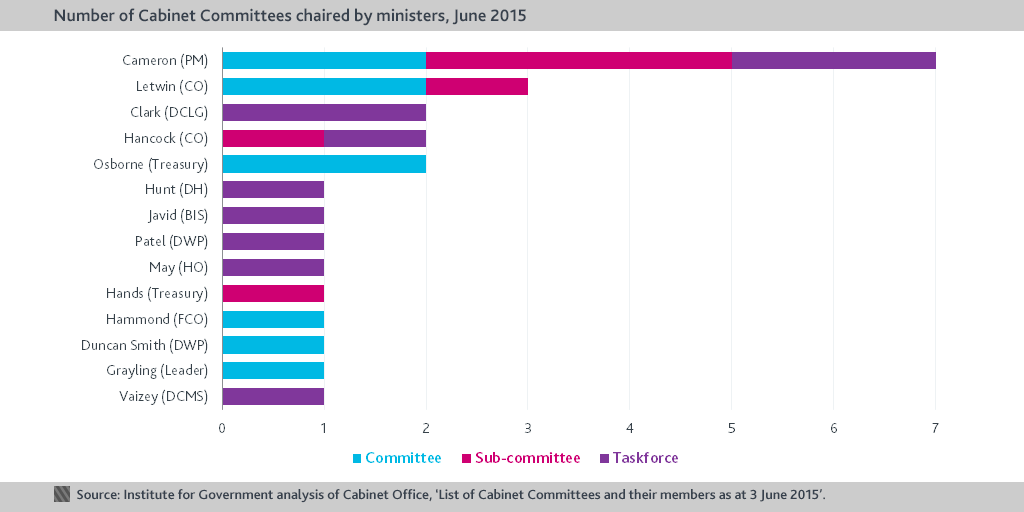
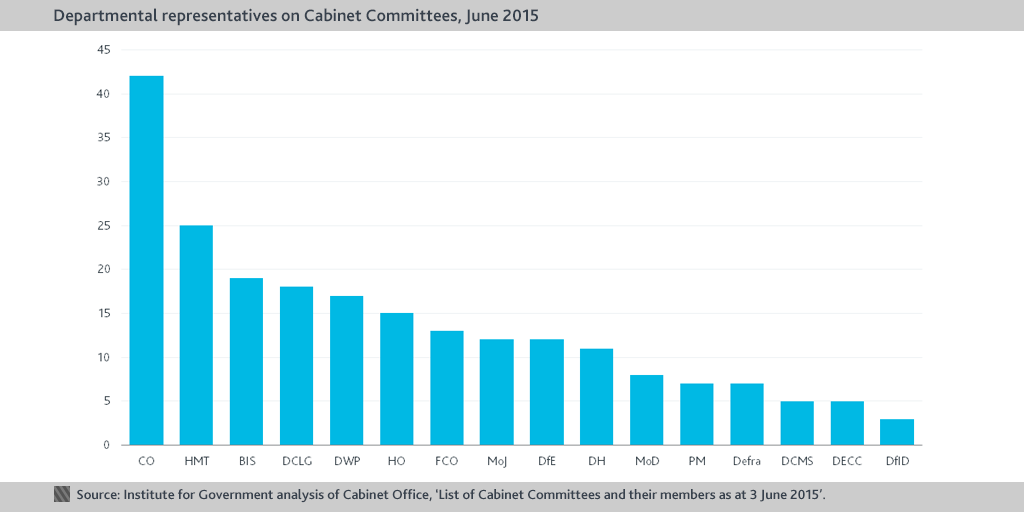
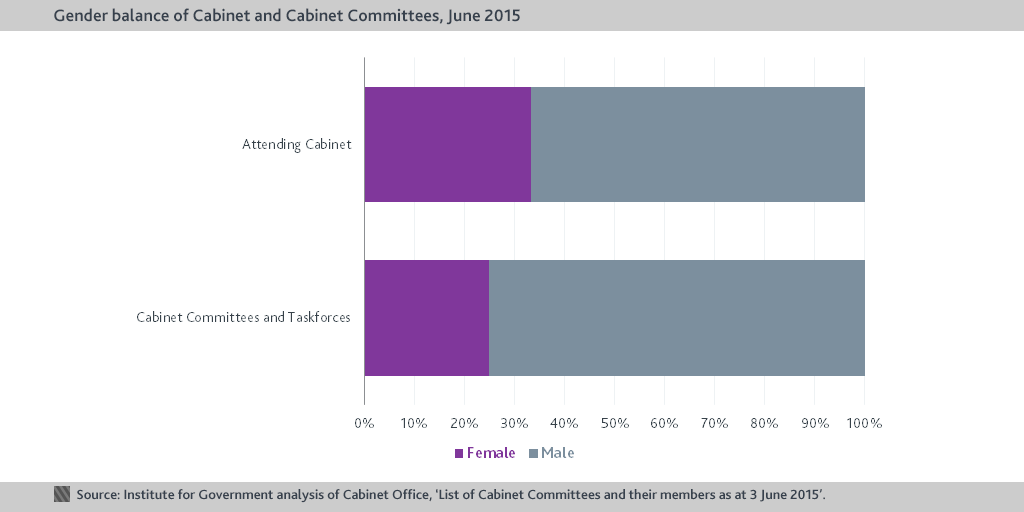
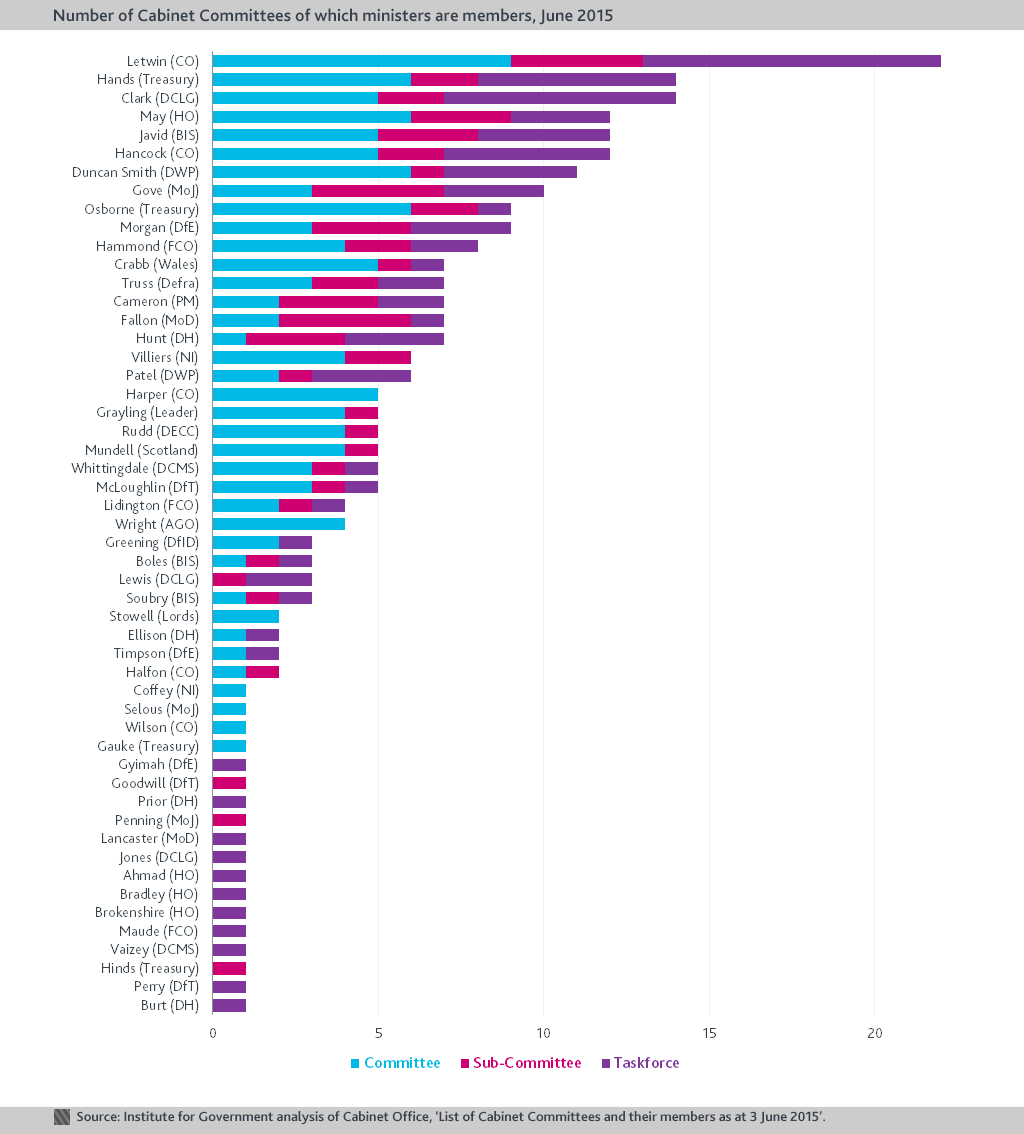
- Topic
- Ministers
- Keywords
- Cabinet Cabinet committees
- Administration
- Cameron government
- Publisher
- Institute for Government